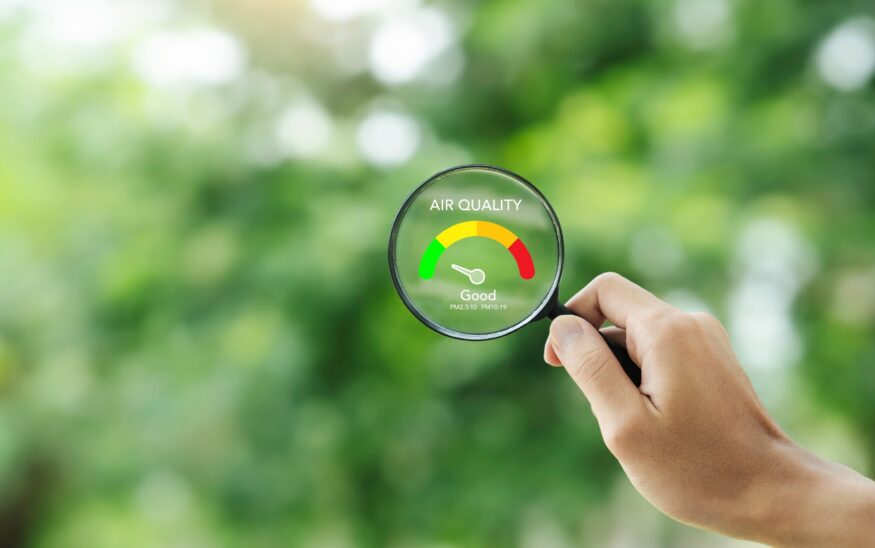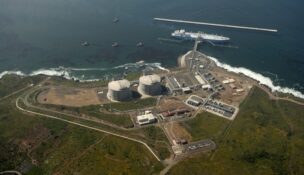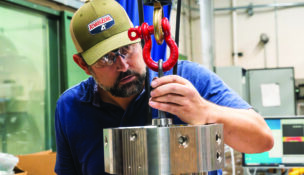Keeping up With a Dizzying Array of Regulatory Air Changes
The answer to Colorado's oil and gas industry is blowin' in the wind.
Kelly Sloan //December 19, 2023//


Keeping up With a Dizzying Array of Regulatory Air Changes
The answer to Colorado's oil and gas industry is blowin' in the wind.
Kelly Sloan //December 19, 2023//
Colorado’s oil and gas industry has spent years — and millions of dollars — staying in compliance with an ever-changing regulatory landscape where the goalposts are constantly moving. However, continuous rulemakings and changes in state oil and gas regulations make it increasingly difficult for companies to keep up.
READ: 2024 — The Next battle in Colorado’s Never-Ending Fracking Wars
Going back more than a decade, Colorado elected officials and industry alike have hailed the state as being home to the nation’s toughest environmental rules and the strictest oil and gas regulations in the country. Despite overwhelming support, that appears not good enough for some.
Lately, a significant regulatory moving target has been air quality. While a complex topic, it has been the easiest regulatory lever for opponents of the oil and gas industry to pull, largely because several factors — including geography and population growth — have historically contributed to less-than-ideal air quality on Colorado’s front range.
Going back to the 1970s, the region dominated by the Denver metro area has struggled to comply with the Environmental Protection Agency’s (EPA) National Ambient Air Quality Standards for ozone. In 1979, the standard was set at 120 parts per billion of ozone in ambient air, based on a one-hour averaging time for the measurement. In 1997, that standard was lowered to 80 ppb over an eight-hour timeframe. In 2008, it was again lowered to 75 ppb. Most recently in 2015, it was lowered once again to 70 ppb. The Denver metro area and Northern Front Range region have been out of compliance with the standards since 2008, despite aggressive plans to reduce ozone emissions.
Still, in 2019, Gov. Jared Polis decided against applying to the EPA for a waiver that credits Colorado against ozone coming in from out of state — from pollution being blown in from California and overseas, for instance, and from wildfires on the West Coast. This triggered a determination of “severe non-compliance,” even though there was little the state could do to lower its own emissions — and nothing at all that it could do to stem the considerable amount of ozone pollution being imported from the west. The practical impact of failing to apply for an EPA waiver for out-of-state pollution will likely be higher gasoline prices and fewer jobs.
It’s a debacle many thought to be solved. Since the state was out of compliance with the federal standards, it was required under the federal Clean Air Act to come up with a State Implementation Plan (SIP) for reducing ozone emissions, which needed to be approved by the EPA. Colorado’s Air Quality Control Commission (AQCC) did just that last year, including stricter permitting requirements for oil and gas production. However, the agency decided that temporary emissions, such as those generated during hydraulic fracturing of a well, which typically only takes place for a period of a few days or weeks, did not require special air quality permits. The AQCC approved the plan in December 2022, as did the EPA the following spring.
READ: Biden is Right About One Thing — Oil and Natural Gas Aren’t Going Anywhere
It would seem the problem was finally solved. However, that’s precisely when environmental groups pulled the litigation lever again, filing a lawsuit in the 10th Circuit Court of Appeals. Last month, the court found for the plaintiffs, saying that the state needed to account for emissions from “fracking,” which is the layman’s term for hydraulic fracturing. This means it’s back to the drawing board for the state, which will undoubtedly impose a whole new set of rules and permitting requirements for every stage of oil and gas production.
Fortunately, or unfortunately, Colorado’s oil and gas industry is accustomed to this sort of thing. Back in 2019, the state legislature passed into law SB-181, a sweeping new regulatory framework for the industry that completely overhauled the rules for Colorado oil and gas development. Among many other things, SB-181 notably changed the mandate of the state regulatory agency—formerly known as the Colorado Oil and Gas Conservation Commission and now referred to as the Colorado Energy and Carbon Management Commission (ECMC) — from one of fostering and managing oil and gas production in the state, to one of essentially “protecting” the state from its production.
Those new rules had hardly been finished when the General Assembly passed HB-1294 “Pollution Protection Measures” during this past 2023 legislative session. The new legislation increased penalties, lowered the threshold for making complaints to the ECMC, and required yet another round of rulemaking – this time directing the ECMC to “promulgate rules that evaluate and address the cumulative impacts of oil and gas operations.” This piece of legislation came about as a result of some lawmakers and environmental groups feeling as though the cumulative impact of rules resulting from SB-181 were not enough.
And that’s on top of the state now having to redo its SIP.
Feeling a little dizzy? You’re not alone. It has been difficult for professionals who monitor oil and gas regulatory changes in the state to keep track of it all. All of this, incidentally, came after more than 19 rulemakings that the industry was subject to between 2007 and 2017, which had earned the state the title of “strictest oil and gas regulations in the country.”
The oil and gas industry are not the only sector to be subjected to reflexive, ongoing legislation and rulemakings in the state. For instance, Colorado’s building industry has been subject to the same dizzying influx of regulation, as new laws are passed every year to require rulemakings before the rulemakings required by previous years’ bills have even been finalized.
Energy and construction are merely two examples. The list goes on. And let’s not forget, Colorado is in constant competition with nearby states like Utah, Arizona, and yes, even Texas.
The bottom line to all of this is not so much the regulations that are being passed — everyone, after all, desires clean air — but the revolving-door style of introducing them.
Business requires, more than anything, stability, certainty and predictability. It may be fair to say that most sectors of the economy can handle a certain level of regulation so long as the regulatory environment is stable year to year. If a business knows the landscape in which it is operating, good business owners can adjust and operate accordingly. But when the goalposts are constantly moved — when laws and agency rules are coming at industry faster than they can be absorbed — the result is an operational environment that is no longer stable, certain, predictable or competitive; and therefore, very often untenable.
In addition, some experts worry that all of this cumulative regulatory confusion will have unintended consequences. “The fact is that, now and well into the future, oil and gas is going to be an important part of Colorado’s energy mix,” said Doug Benevento a former state and federal environmental regulator. “That oil and gas is going to come from somewhere and shutting down Colorado’s industry, which extracts energy in an environmentally sound manner so that we can import it from somewhere else with less stringent safeguards, actually hurts the environment and working Coloradans.”
Colorado’s air quality saga continues, with no indications of abatement in the near future, and with the oil and gas industry – which is responsible for perhaps 3-7 percent of the ozone in the non-attainment area – remains in the crosshairs. Other industries clearly aren’t far behind.

























